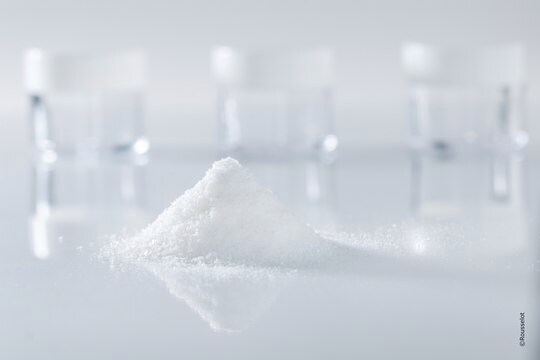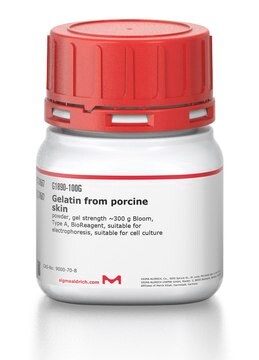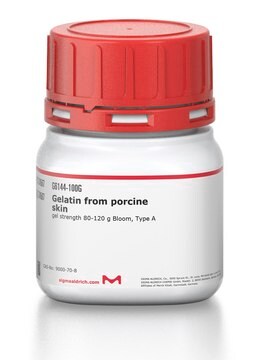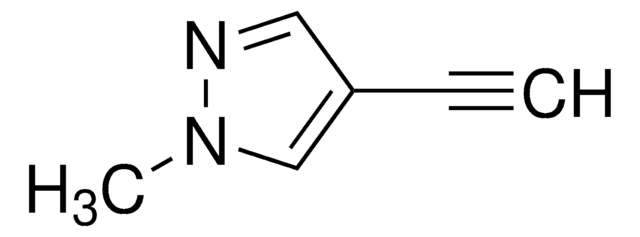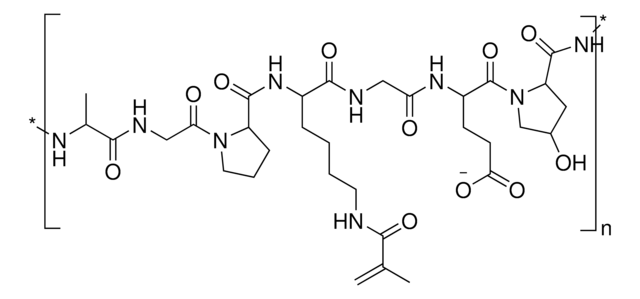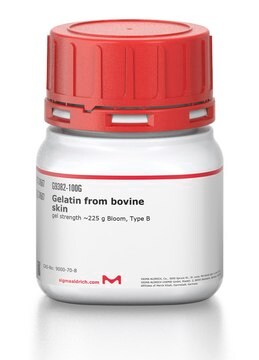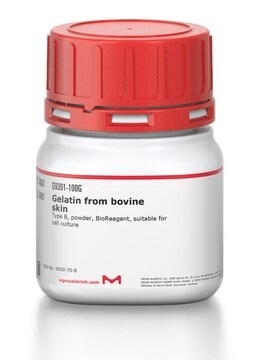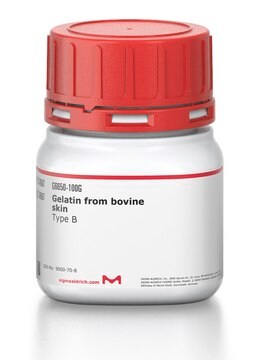901756
Low endotoxin gelatin from porcine skin
gel strength 240-360 (Bloom), <10 EU/g Endotoxin
Synonyme(s) :
beMatrix™ gelatin LS-H
About This Item
Produits recommandés
Forme
powder
Impuretés
<10 EU/g Endotoxin
<300 g Total viable aerobic count
Perte
<15% loss on drying
Couleur
white to pale yellow
pH
5.0-6.5
Viscosité
4.0-6.5 mPa.s
Traces d'anions
sulfite (SO32-): <1.5 mg/20g
Traces de cations
As: <1 ppm
Hg: <0.1 ppm
heavy metals: <20 ppm
Vous recherchez des produits similaires ? Visite Guide de comparaison des produits
Catégories apparentées
Application
Informations légales
Code de la classe de stockage
11 - Combustible Solids
Classe de danger pour l'eau (WGK)
nwg
Point d'éclair (°F)
Not applicable
Point d'éclair (°C)
Not applicable
Faites votre choix parmi les versions les plus récentes :
Certificats d'analyse (COA)
It looks like we've run into a problem, but you can still download Certificates of Analysis from our Documents section.
Si vous avez besoin d'assistance, veuillez contacter Service Clients
Déjà en possession de ce produit ?
Retrouvez la documentation relative aux produits que vous avez récemment achetés dans la Bibliothèque de documents.
Les clients ont également consulté
Articles
Professor Shrike Zhang (Harvard Medical School, USA) discusses advances in 3D-bioprinted tissue models for in vitro drug testing, reviews bioink selections, and provides application examples of 3D bioprinting in tissue model biofabrication.
Notre équipe de scientifiques dispose d'une expérience dans tous les secteurs de la recherche, notamment en sciences de la vie, science des matériaux, synthèse chimique, chromatographie, analyse et dans de nombreux autres domaines..
Contacter notre Service technique